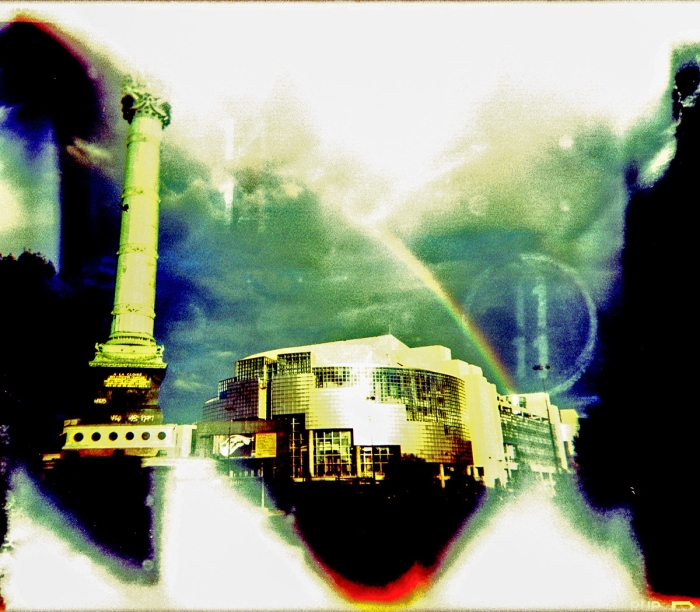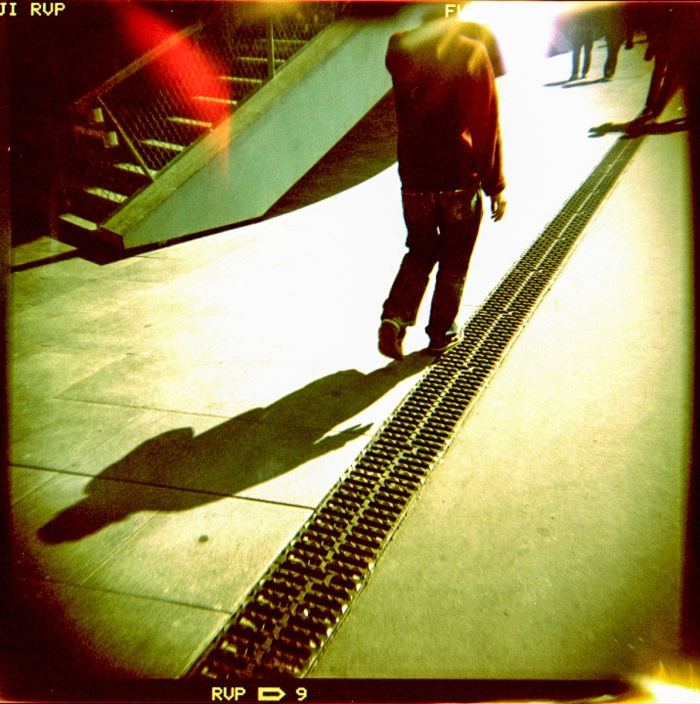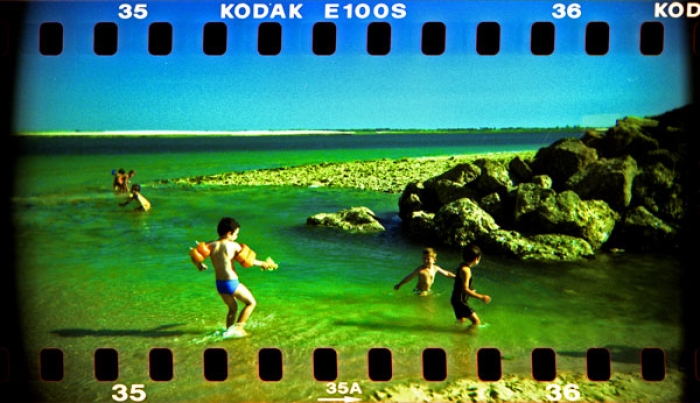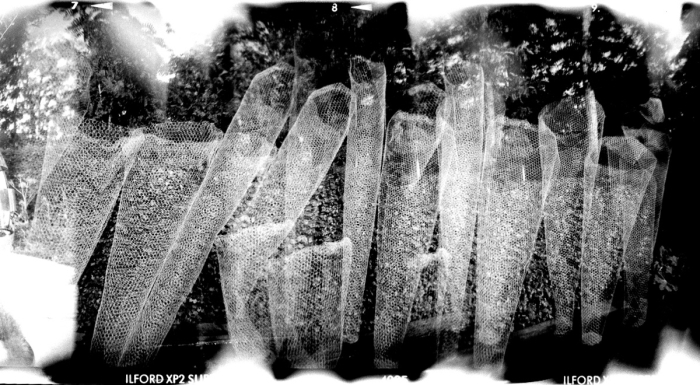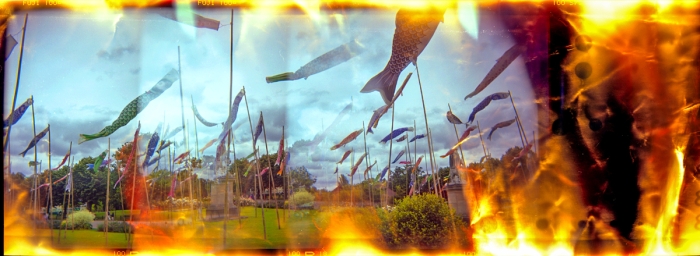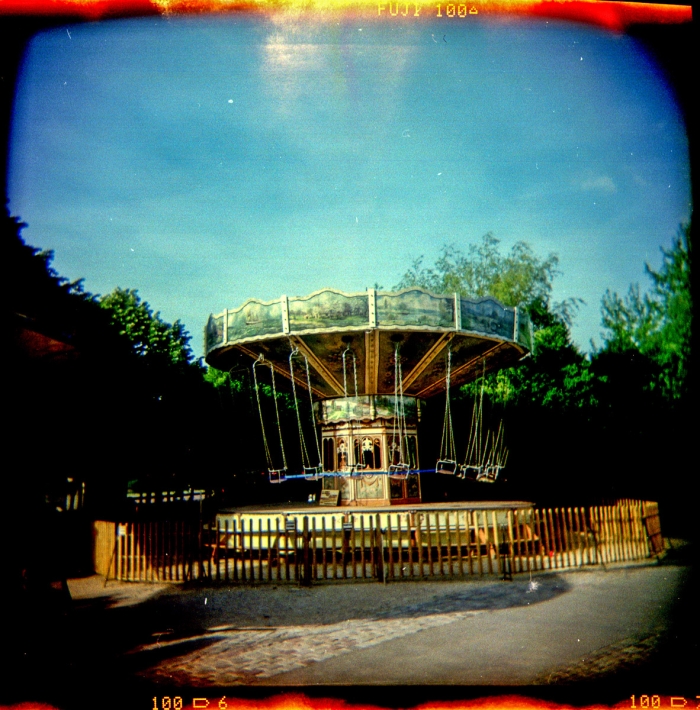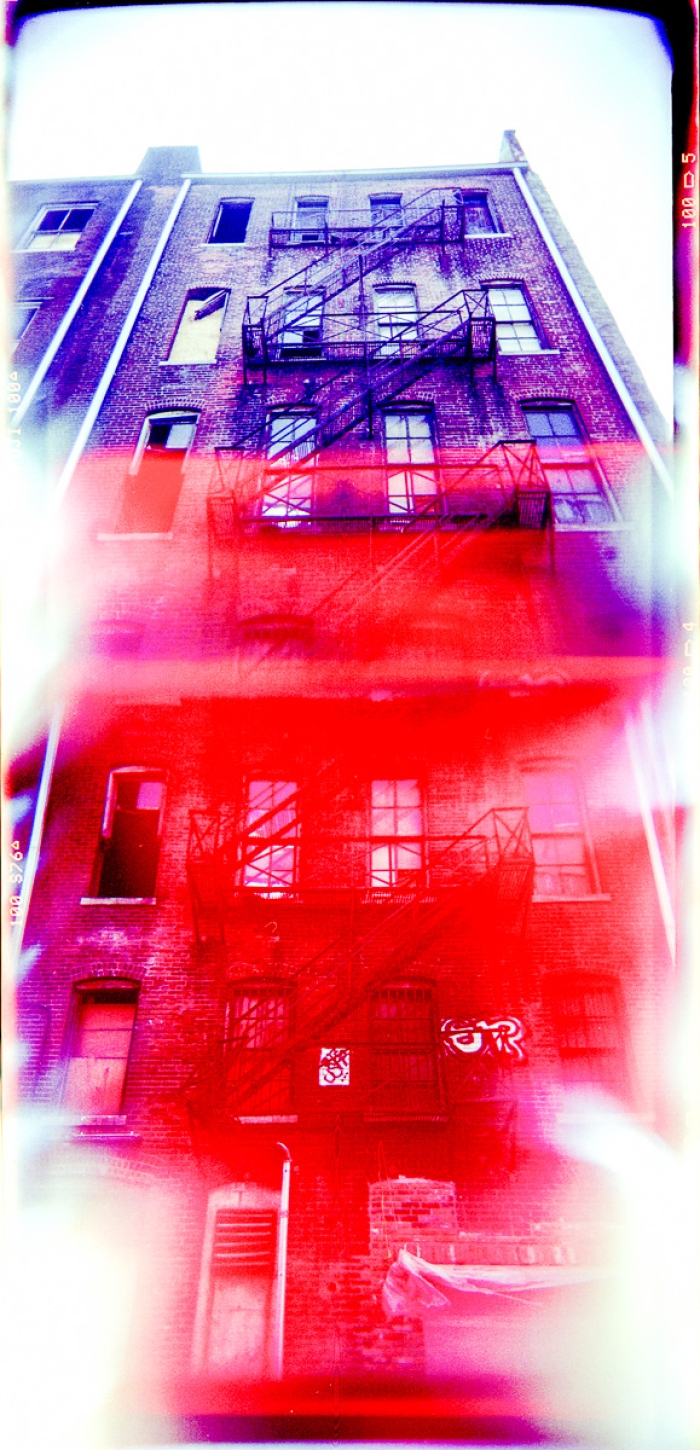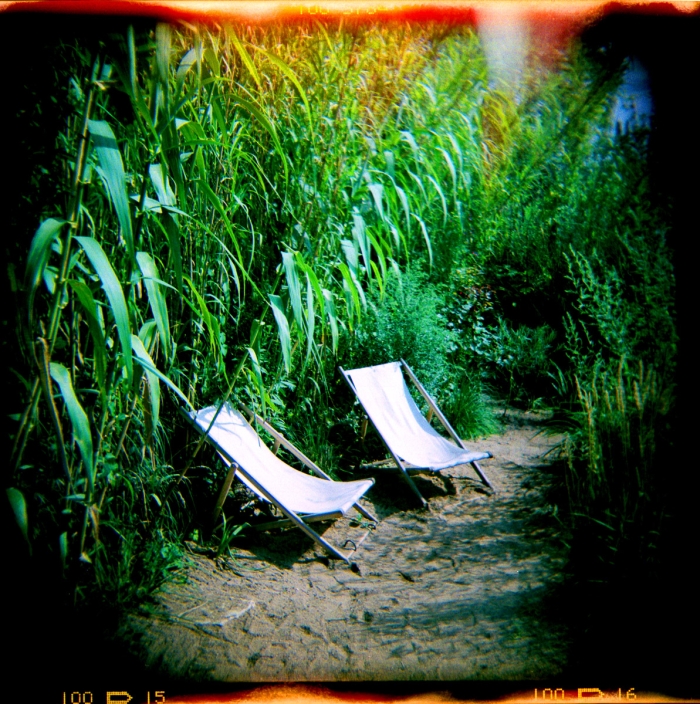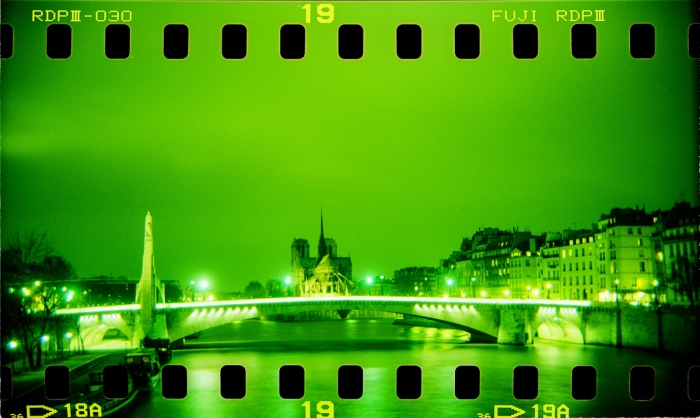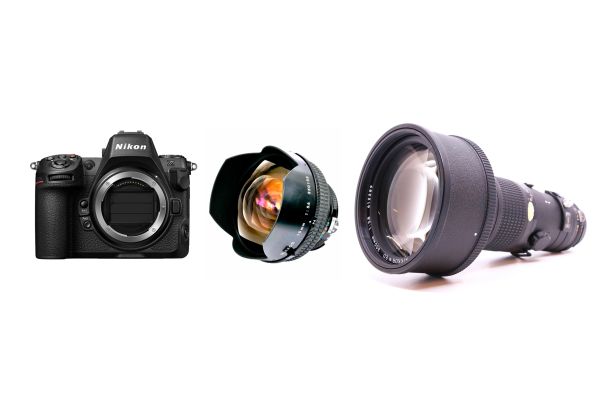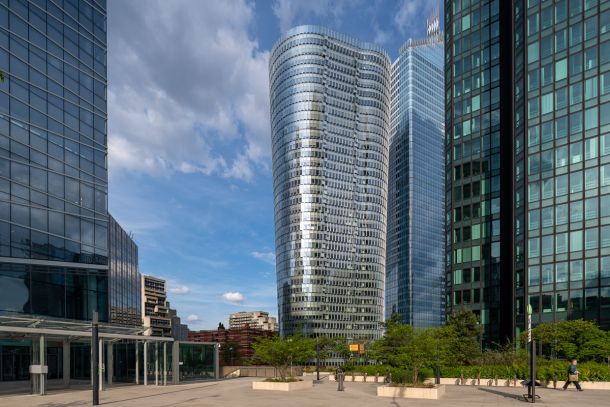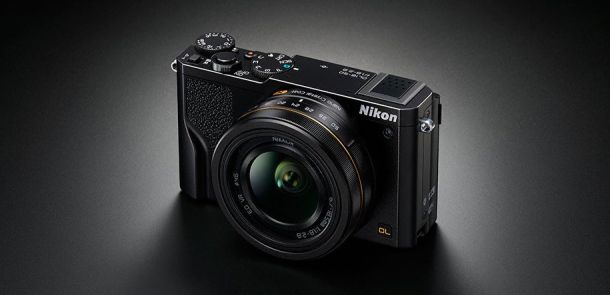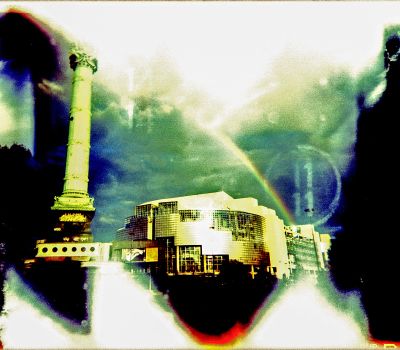
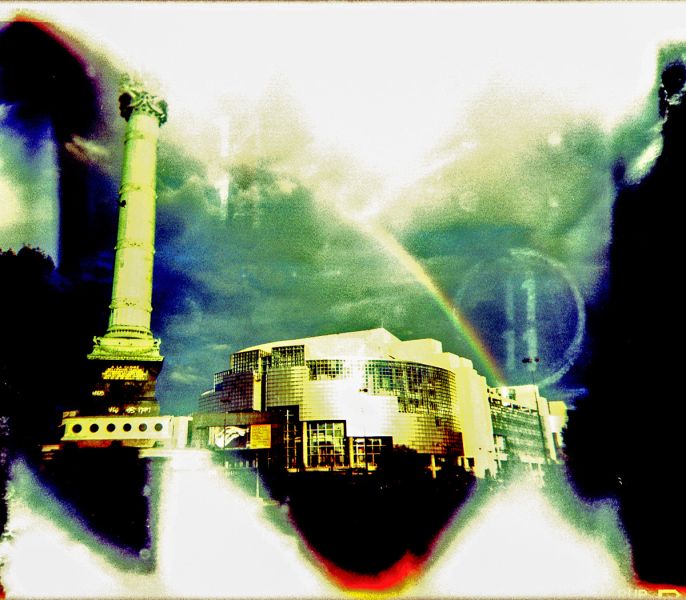
Experimental Photography: Holga and the Art of Controlled Chance
Between happy accidents and artistic intent, experimental photography opens up a fascinating territory, one where technique, material and chance engage in dialogue. Each image becomes an adventure, at once unpredictable and carefully constructed.
This balance between mastery and randomness is something I find both in my experiments with the Holga and in my more recent series. I’m drawn to photographs that preserve a margin of uncertainty, where light or blur give the viewer freedom to enter the image, interpret it, and imagine the story behind it. That blur, whether optical or poetic, opens the image rather than closing it.
Last weekend, during the open-studio days, I met photographer Frédéric Carrayol. His approach, combining precise composition with unpredictable development, immediately resonated with me. He shoots mainly in black-and-white film, often using a large-format camera, then prints his images on vintage papers found in flea markets. The slow, capricious process of lith development creates cloud-like textures in the skies and a grainy surface reminiscent of the earliest days of photography. His work perfectly illustrates that fertile tension between control and accident, something I’ve also pursued for years through my own film experiments.
The Holga: fragile toy, creative tool
The Holga is a Chinese medium-format (6×6 cm) plastic camera, equipped with a plastic lens and a fixed shutter speed of 1/60 s. Popularized by Frédéric Lebain in his book “Mes vacances avec Holga” (2000), it is best known for its light leaks that fog the film, a flaw turned into a creative asset.
Using 120 film, it operates entirely manually: film advance relies on the frame numbers visible through a small red window… which, of course, lets light in. A strip of black gaffer tape is essential to prevent unwanted fogging, but why not embrace those accidents instead?
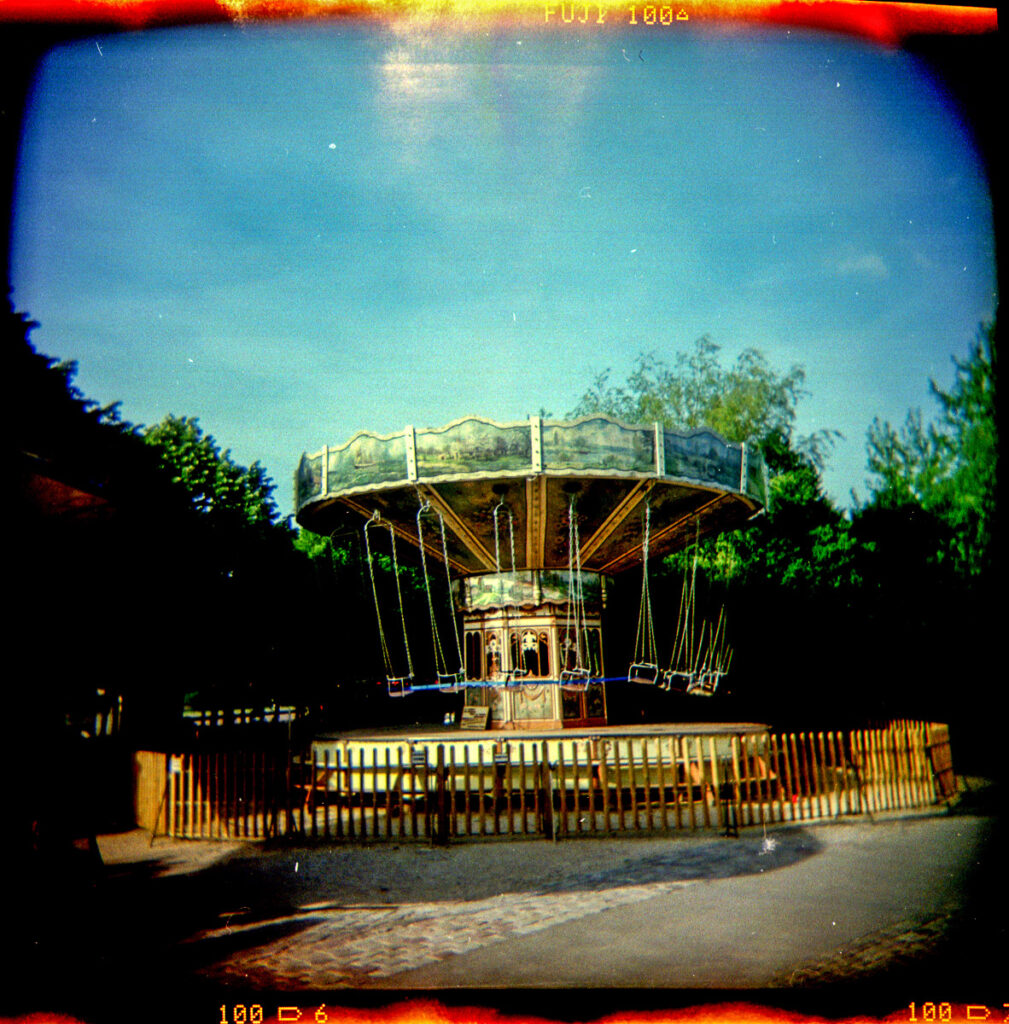
Carousel – Hallucinations series – Holga – Photo: © Sebastien Desnoulez
My photographic experiments with the Holga
Since 2004, I have explored the creative potential of the Holga and analog film through a variety of techniques:
1. Cross-processing films
After testing several color-negative and Ilford XP2 400 films, I experimented with Fujichrome slide film, processed as color negative. This cross-processing introduced unpredictable color shifts, green tints, strong saturation, or inverted contrasts depending on the film batch.
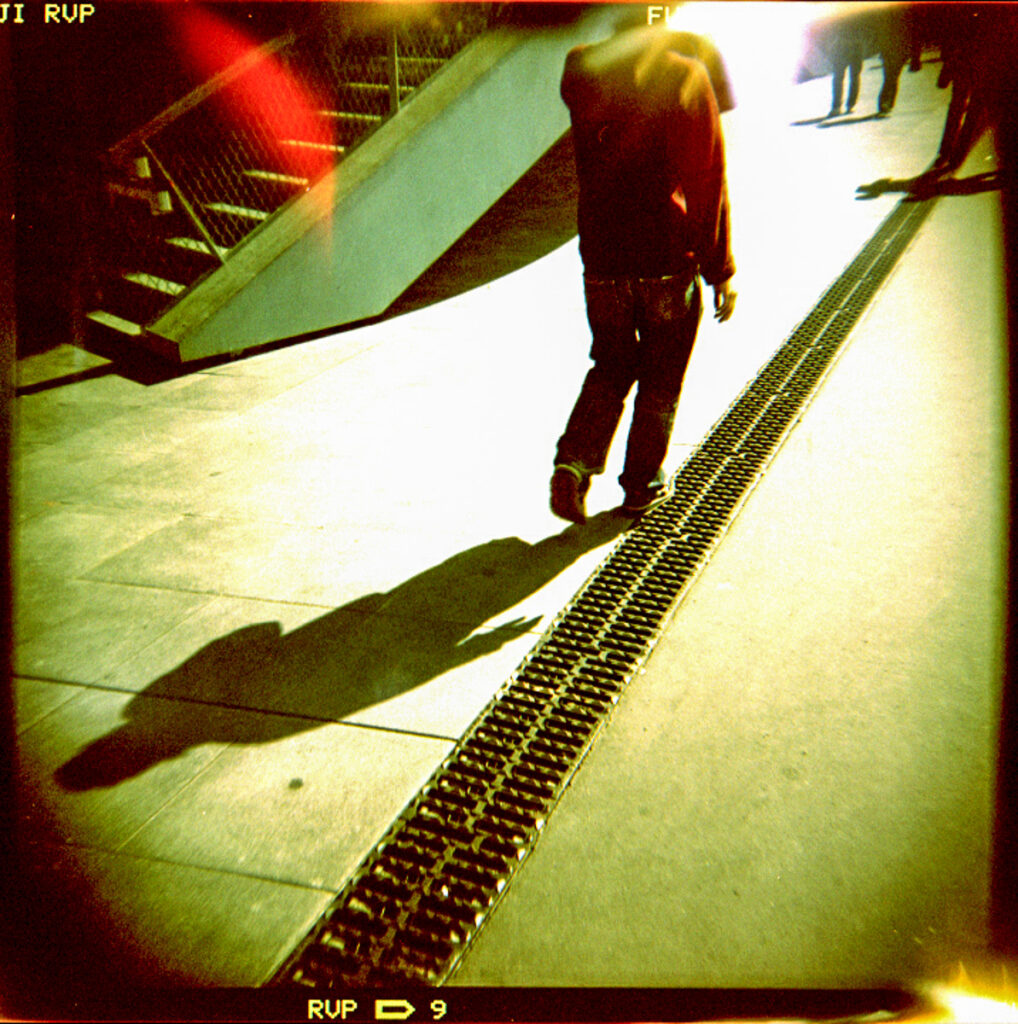
Man without head, Paris – Série Hallucinations – Holga – Photo : © Sebastien Desnoulez
2. Multiple exposures and frame shifts
The Holga allows multiple exposures on a single frame or partial film advance between shots. This makes it possible to create layered compositions, architecture overlaid with natural textures, multiplied silhouettes, or dreamlike double scenes.
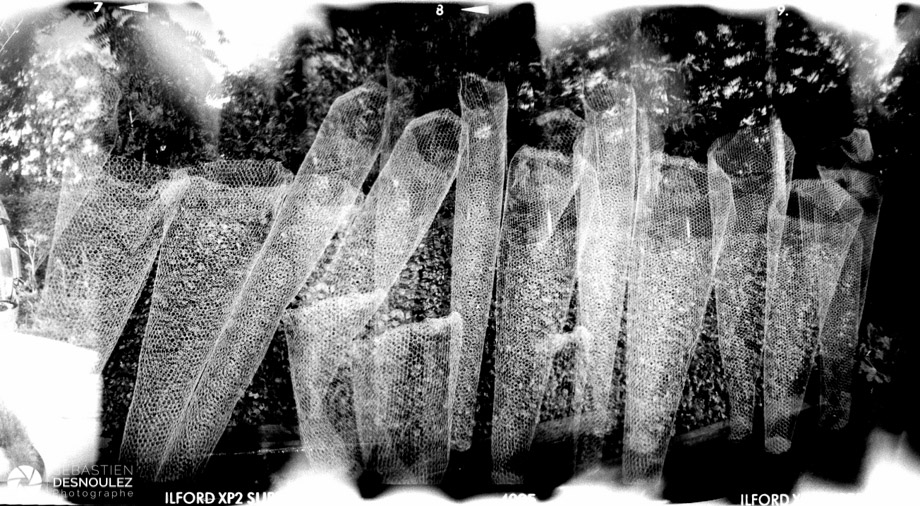
Double exposure of fences photographed with a Holga on Ilford XP2 film – Chaumont-sur-Loire 2004 – Photo: © Sebastien Desnoulez
3. Intentional paper-back imprint
By exposing the film to light after shooting, the frame numbers and markings printed on the film backing paper become visible on the image. I also used colored LEDs or crumpled the backing paper to create random luminous patterns.

Sunflowers – Hallucinations series – Photo: © Sebastien Desnoulez
4. 35 mm film inside a medium-format camera
Replacing 120 film with 35 mm film held by spacers allowed me to expose the full film height, including the perforations. The result has a raw, cinematic look that I love.
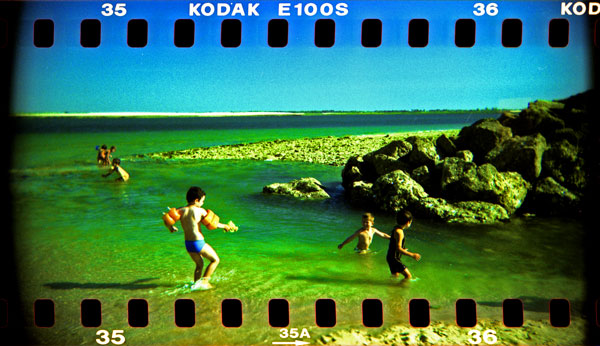
Attack – Île de Ré – Photo: © Sebastien Desnoulez
5. DIY long exposures
The earliest Holga models had no Bulb mode. I drilled a hole in the camera body to insert a small nail that held the shutter open. That hack made it possible to capture my first night and long-exposure photographs.
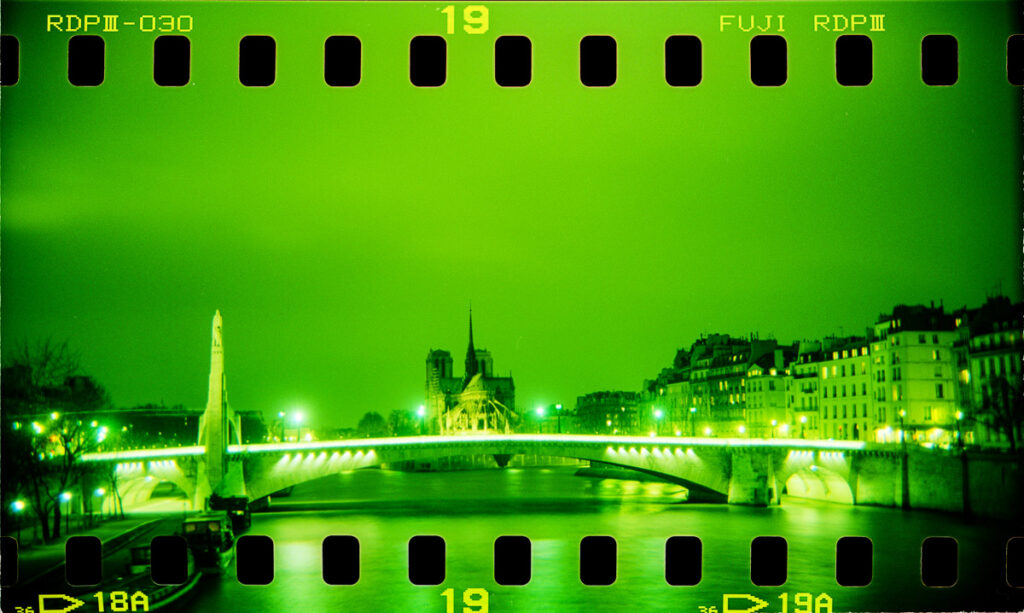
Pont de la Tournelle – Paris – Photo: © Sebastien Desnoulez
Conclusion: between chance, structure and emotion
Through the Holga, I rediscovered a form of instinctive joy, the pleasure of shooting without obsessing over technical perfection. Each image balances intention and surprise, careful framing and the freedom of light. Film fogging, light leaks and imperfections are not filters or gimmicks but expressive materials that contribute to the composition. Chance here is not chaos, it’s a collaborator.
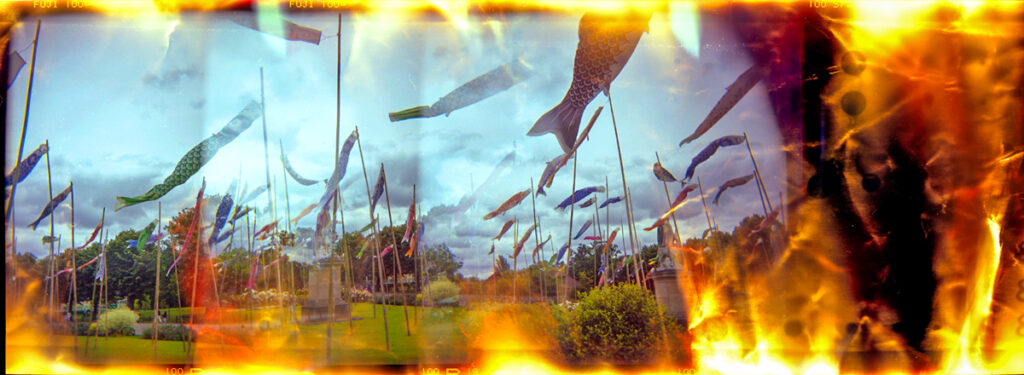
Double exposure of wind socks photographed with a Holga on Fuji film – Jardin d’Acclimatation, Paris 2005 – Photo: © Sebastien Desnoulez
What fascinates me most is the graphic and poetic dimension of these images. Some verge on abstraction; others invite reverie. They leave room for doubt, mystery and interpretation. The same spirit runs through my contemporary series, intentional blurs, reflections, distortions, all exploring how photography doesn’t merely show, but suggests and evokes.
In an age of hyper-sharp and predictable imagery, this handcrafted experimental photography brings me back to the essence of the medium: capturing not just what we see, but what we feel.
More examples from the “Hallucinations” series:
Click on the photos below to view them full screen.
All photos on this website are copyright © Sebastien Desnoulez. No use is allowed without the author’s written authorization.
Legal notice
Did you enjoy this series? Discover limited fine-art prints on Une Image pour Rêver.
About the author
Sebastien Desnoulez is a photographer specializing in architecture, landscapes and urban scenes for over 40 years. Trained in the analog era, he covered major motorsport events in the 1990s before turning to fine-art photography. He now documents the evolution of the medium while maintaining a demanding practice that combines technical rigor with poetic vision.
Tags
I am represented by the gallery
Une image pour rêver
